10 Things We Learned From the 1986 Transformers Movie’s Original Cast & Crew
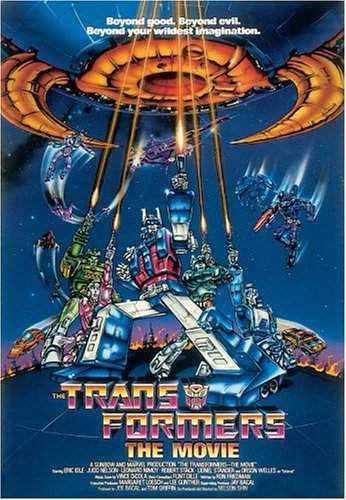 |
| Amazon |
It’s hard to exaggerate the impact that The Transformers: The Movie had on those of us who saw it in the summer of ’86. Back then, all I expected was a snazzier version of the TV series. Instead, the film played like a trippy collaboration between Ralph Bakshi and Sam Peckinpah. With its slaughter of everyone’s favorite characters shown in a more elaborate fashion than we had any reason to expect, “more than meets the eye” didn’t quite cover it. At a recent tribute screening presented by the American Cinematheque and Dammaged Goods, I spoke with the movie’s story consultant Flint Dille, voice director Wally Burr and voice actors Neil Ross and Michael Bell about its enduring legacy.
Flint Dille began writing TV animation on the Mister T cartoon show. Today, he scripts award-winning video games like The Chronicles of Riddick: Escape from Butcher Bay. He spoke to us about being a writer on the Transformers series and working on the feature film.
1. Meet the Edge Guy
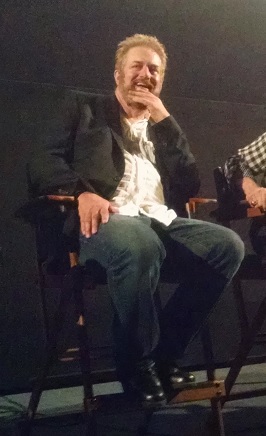 |
| Matthew Chernov |
Topless Robot: When you joined the writing staff of the animated Transformers show halfway through the first season, the intensity level on the series increased dramatically. Was this something that you purposefully set out to do?
Flint Dille: Well, I was working at Lucasfilm on a show called Droids, and that didn’t go so well. :laughs: So then Steve Gerber, the comic book writer, called me up and said “Hey, you should come and work on G.I. Joe with us. You can hit people with real fists!” And even though this was a very repressed time in children’s television, on these toy shows you could get away with more than usual. So I worked on G.I. Joe for about a year, and then the producers came to me and said “We want to give our Transformers show a little bit more edge.”
TR: Why did they want to change the tone?
FD: They were competing against another toy show called GoBots, and it was a pretty hard fight. GoBots was actually winning. So I was brought in specifically to be the edge guy on Transformers.
TR: Was Hasbro very hands-on when it came to creative decisions like that?
FD: Hasbro had a whole different idea about violence than the big networks did. They just wanted to sell toys! And so they pretty much left us alone to do whatever we wanted to, within limits. I mean, we couldn’t disembowel anyone. :laughs: From that point of view, there was no adult supervision. It was like a get-out-of-jail-free card. The actual Hasbro guys were nothing but helpful. Anything we wanted, they’d provide us with. If we were confused about the scale of a new character or what it might look like, they’d send us out a seven-foot long battleship model for reference!
2. Killing Optimus Prime
 |
TR: Did your writing process change when you began scripting the movie as opposed to the TV show?
FD: Well, it did from the point of view that we knew this was going to be a very big movie. Of course, the purpose of the movie was not only to have something in theaters, but also to introduce next year’s product line. Which meant that we had to first kill off the old product line to make way for the new toys.
TR: So Optimus Prime had to die?
FD: Exactly. We just didn’t realize that it was going to bother anybody! :laughs: But I’d argue that had we not killed him, we wouldn’t be talking about Transformers right now. Still, we didn’t know the can of worms that we were opening when we wrote those scenes.
TR: Can you talk about writing his death scene?
FD: Well, Gerber and I were trying to figure out how to kill Optimus, and we probably re-wrote that scene at least five-hundred times. And one day he tells me that he’s got some comic book guy coming over to the office for lunch. So the guy comes in, and he’s been working on some Batman book, and we start talking about killing Optimus. And I mentioned that I wanted to do it like Davy Crockett dying in The Alamo. You know, that old John Wayne movie? And the comic guy says, “Have you heard of The 300 Spartans? You should do it like that!” And of course, it was Frank Miller.
TR: That’s amazing.
FD: Yeah, it’s pretty cool to think about.
TR: You’ve written both animation and live-action films. What’s the difference between writing for the two?
FD: Now, with CG and special effects, there’s no difference at all. It’s the same medium. I mean, there were things that we used to do in animation that you couldn’t do any other way. Now you can. For instance, when you were scripting live-action TV back in the day, you couldn’t just write in an air-strike to quickly end an episode, because it would be way too expensive. But if you were writing G.I. Joe, you could finish every scene with someone bombing the hell out of something! :laughs: Now, though, you can do that with live-action as well. Animation was the only medium at the time that you could do this kind of crazy stuff.
3. A Team Accomplishment
 |
| Dammaged Goods |
TR: Why do you think fans still respond to the Transformers series so strongly?
FD: It’s just really fun! I mean, sure, a lot of it is just the luck of the draw. We hit that exact window in the mid-’80s, when all the baby boomers were having kids. We sort of rode that wave. Plus, Transformers seemed so different at the time. We really tried to make good stuff. And we weren’t inhibited by networks or censors or anything like that. We just went and did our stuff with an amazing team. Steve Gerber was a major comic book guy. I mean, he created Howard the Duck! You could argue that he was the best writer of that era, or certainly one of them. He was on the A list.
TR: Can you talk about working with director Nelson Shin on the feature film?
FD: Oh, Nelson was great! If you look at the whole visual iconography of the film, it’s so unbelievably subtle and well thought out. He did a million things brilliantly. Just watching it again while we were doing the DVD commentary, I thought it was amazing. He had to figure all that stuff out, because we certainly didn’t do it in the series. Nelson brought a ton to it. But with this film, authorship and ownership at every level is divided between twenty hands. It’s really a team accomplishment.
4. The Kirby Connection
 |
| Comics |
TR: Were you a science-fiction fan before you became a writer?
FD: Oh yeah. Since I was a kid. My grandfather, John Dille, was one of the originators of the Buck Rogers comic strip, so I was kind of born into science fiction. It’s a genetic problem. :laughs:
TR: You mentioned Steve Gerber and Frank Miller. Were you a big comic book reader?
FD: I read comics in the era where you were either a Marvel or a DC guy. As a kid, I was maybe a little more DC, but by the time I got to high school I wasn’t reading comics. And then after college, I joined this business and all of a sudden I’m working with all of these comic book guys! In fact, during my first week at a production company called Ruby-Spears, my boss sent me to go work with a guy named Jack on an action show. So I meet this old guy named Jack. And we sort of bonded by talking about history and antiquity and ancient gods. Stuff like that. And about the middle of week two, he said “You know, when I created Captain America…” And I realized, this is Jack Kirby! It was late in his career, and he was still doing this stuff, not because he had any particular need to, but just because he love doing it!
TR: What’s your take on Michael Bay’s modern Transformers films?
FD: I think they’re just fine. I watch them. I like them. I know I’m not supposed to, but I just like seeing the stuff fly around. I mean, design-wise I have a few problems, because sometimes I don’t recognize the characters in their various forms. They’re different than what we were doing, but they’re their own valid version of it. I just like the fact that they exist.
Wally Burr is a director, producer and actor whose work in animation, particularly on the Super-Friends TV series in the early 1970s, is legendary. Having played several characters on the Transformers animated series, he served as Voice Director on the feature film. Here he discusses working with the all-star cast on the project.
5. From Leonard Nimoy to Citizen Kane
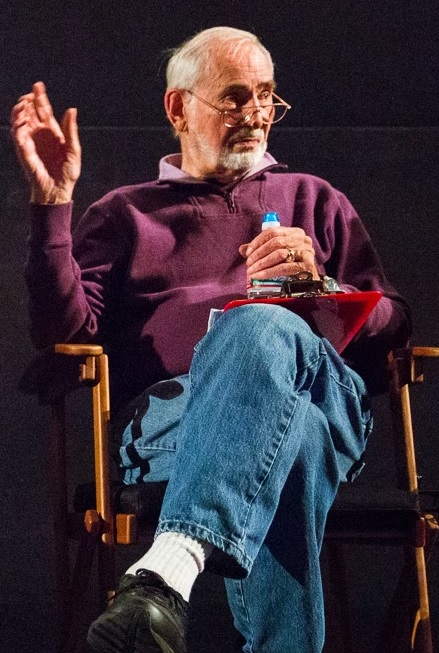 |
| Dammaged Goods |
Topless Robot: The film world recently lost Leonard Nimoy, who voiced Galvatron in the Transformers animated feature. Can you talk about what he was like to work with?
Wally Burr: Very professional. Business-like. He came in and was ready to work. I asked him if I could give him the profile of what the show was about, to help get him up to speed. And he said “Go ahead.” So I did. And when I finished with the full explanation, he said, “Okay, get your director and let’s do this.” :laughs: He didn’t realize that I was the director! He must have thought I was a production assistant or somebody hired by the studio to hold his hand until he was ready to be used.
TR: What about Orson Welles? He came with quite a reputation, I imagine.
WB: With Mister Welles, I was intimidated in advance. Because if you’ve ever heard any of the outtake reels on him, he could be pretty tough. And he had a right to be! He could look at any script and say, instantly, I know what you need here. The problem was, he didn’t want to be directed. But somebody had to coordinate the session, and that’s what a voice director does. We coordinator of the cast. Otherwise, they’d overlap each other. The voice director keeps the characters straight, and so on. So I thought I was going to have a lot of problems with Mister Welles. And I did. At one point he was rather slow in his delivery, so I gently said “Mister Welles, this is sounding great. I’m wondering if I can ask you to pick up the tempo just a little bit.” And he said, in that voice of his, “I’m reading this as rapidly as I possibly can. And furthermore, I’ll do the slating from now on.” Well, the voice director usually slates from the recording booth.
TR: What do you mean by slate?
WB: That means saying take 22, take 23, or whatever. It keeps the recordings organized. So by saying that he’ll do the slating himself, Welles left me no reason to interrupt him. So, to correct his slow delivery, Paramount had a gadget that would take out little slices of the audio and put the rest of it back together again. It didn’t change the pitch, or make him sound like a squirrel, but it speeded him up about eight percent, and it was what I was trying to get him to do all along! He died about three weeks after that last recording.
6. Scatman’s Swan Song
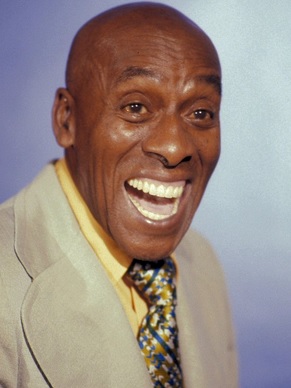 |
| All Music |
TR: The Transformers movie was Scatman Crothers’ final film as well. He’d done a lot of animation voice work in his career. Had you worked with him before?
WB: Scatman and I had worked together at Hanna-Barbera on Hong Kong Phooey, where he played a dog detective. I didn’t even think of him for Transformers, but one of my producers suggested that we should try him as the character Jazz in the film. Here’s something you might find interesting. Scat passed away in the middle of recording a TV series we were working on, and since I’d worked with him for so long, I thought to myself :imitates Scatman’s voice: “I could do that!” So I did his last three shows, using his voice, after he passed away, and no one ever knew. I just didn’t want to try to find somebody else as a voice match, and plus I could use the dough myself. :laughs:
TR: After working on the Transformers TV series, was there anything different about the recording sessions for the film version?
WB: We took a lot more time because of the celebrities involved. You’ve got to take more care with them. You send limousines for them. And you usually record them solo, rather than in an ensemble. Personally, I’d rather do it ensemble, but the celebrities don’t want to be bothered working it out with some other actor. They’re there to get the job done, get the dough, thank you very much and goodbye. But some of them came in and really want to deliver their best work. Judd Neslon, who played Hot Rod in the film, came in worried. He said “I’ve never done this before, I have no idea what I’m doing, please hold me by the hand.” So I showed him exactly how much distance to keep from the mic and assured him that, otherwise, it was no big deal. And he said “Oh! Great!” and that immediately set him at ease.
7. The Voice of Nobility
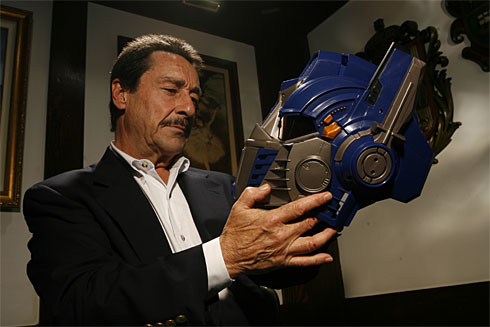 |
TR: For many of us, Peter Cullen is probably the most well-known voice actor in the series, having played Optimus Prime for decades. What is it about his voice that makes him so perfect for the character?
WB: We were auditioning lots of people for the show, and he was auditioning for Optimus. He didn’t have it yet, but he was well known, so he was obviously going to be one of the best candidates. And I was pushing him pretty hard at that audition. And he’s a big guy, a master of everything. And he said “Wally, I’ve got about thirty promos to do for ABC tomorrow, can we back off a little bit?” And I said, “What if we back off a lot and just make Optimus a very nice gentleman who doesn’t shout at anybody, because he knows what the hell he’s doing?” And so Peter softened his voice, and became noble! Instead of a shouting boss, he was noble. And he credited me once at a convention when someone asked him how he created the character. He pointed to me at the back of the room. He agreed with me that we could soften him, yet still make him a very strong character. And he’s been doing it for over thirty years now!
Neil Ross and Michael Bell are actors and voice artists whose decades of work in both animation and live-action films give them a unique perspective on the industry. Here they discuss their contributions to The Transformers: The Movie, and reflect on why it’s never been more popular.
8. Throat Ripping is Painful
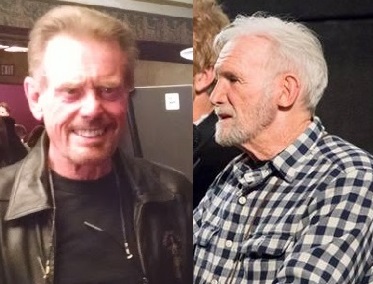 |
| Dammaged Goods |
Topless Robot: You both voiced a number of different characters throughout the Transformers film. Did you have any particular favorites to play?
Neil Ross: Yes, I think so. My favorite was called Springer. He could turn into a helicopter at will, and he was just a good, fun, solid hero-type to play. He also didn’t involve any throat ripping.
TR: Throat ripping?
NR: :speaks in a painfully scratchy voice: “That’s when some of the characters sound like this!”
TR: That hurts me just hearing it! So there’s a physically difficult aspect to your job.
NR: If you do enough takes and they want you screaming loud enough, after a while it can get to you. I’m always hesitant to complain because I know there are people out there with real jobs, who dig ditches. But it can be a bit of a strain.
Michael Bell: My favorite character to play was probably Prowl, because he had a wry sense of humor, and he was a good guy. I mean, he wasn’t as edgy as the rest of them, but he was the kind of hero that actors love to play. Too bad they killed him! :laughs:
TR: Have you also experienced problems with throat ripping?
MB: Well, I teach voice acting for animation. I’ve been doing it for years. I teach Japanese students who fly in from Osaka and Tokyo. I teach them ADR and dubbing. And they have to learn how to do those extreme voices, the girls as well. And I teach them that the voice comes from the diaphragm, not the throat, or you can really hurt yourself. I learned by hurting myself.
TR: Who’s the most challenging character you ever voiced?
NR: On the G.I. Joe series, I was fortunate to land the character of Shipwreck, who was just such a wonderful part to play. You see, most of the characters in that show were either very, very good or very, very evil. But Shipwreck was sort of conflicted. He wanted to do the right thing, but he wasn’t very good at taking orders. So he would try to do things his way and would get into trouble. And characters like that are very rewarding to play.
9. Who Killed Orson Welles?
 |
| Amazon |
TR: Did you ever work with the film’s director, Nelson Shin, or were you primarily directed by Wally Burr?
NR: Well, Wally was in the room with us for rehearsal. But when we were recording, he’d be in the booth, listening to us on the speakers and directing us through the glass. I never met Nelson Shin, the director. Nelson would take the completed voice tracks and marry them to the image. So he didn’t need to meet us to do that. If he had any specific direction for the characters he’d communicate them to Wally, and Wally would communicate them to us.
MB: Wally knew what he wanted. There would be maybe twenty of us in a room as large as my bathroom. We were all recording it together. In those days, you couldn’t just phone in your part. I preferred it that way, since you could react to the other actors, right there. Now occasionally Wally would do a line reading, to demonstrate how he wanted us to say something, and I would stop him and say “Wally, don’t give us a line reading, we’re actors!” I was considered the deputy. Have you heard about Wally and Orson Welles?
TR: No. What about them?
MB: Wally told me that they were bringing Orson Welles into the studio to record. And I asked if I could be there. And he said no, it’s just me and the engineer. So I begged, please! But he said no. So later, I heard that Orson Welles gave a line and it wasn’t exactly the way that Wally wanted it, so I’m told that Wally reiterated the line for him the way he wanted it, and Orson stopped cold and said, in his booming voice, “Wally, are you giving me a line reading?” And Wally said no, no, no! So when Orson died not long after that, I spread the rumor that Wally Burr killed Orson Welles! :laughs:
10. Greater Than the Sum of Its Parts
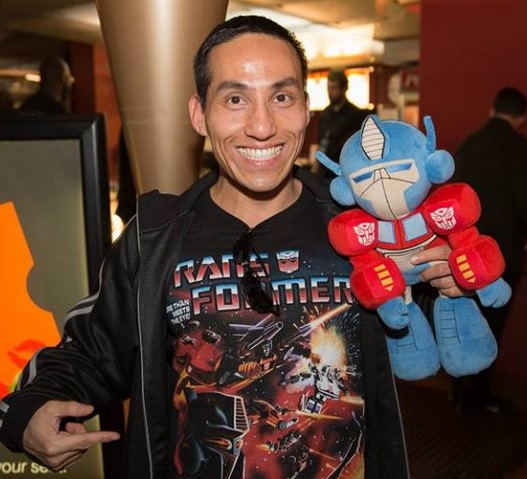 |
| Dammaged Goods |
TR: Why do you think the franchise is still so popular?
NR: These shows were accused of being half-hour toy commercials, and yet, either by accident or design, they hired a team of producers, writers, animators, actors, directors, and the whole became greater than the sum of its parts! And whether they wanted to or not, they ended up creating something far, far bigger than a toy commercial. The fact that we’re standing here having this conversation is proof of that. And this movie from 1986, it didn’t do all that well at the time. But over the years it’s been re-discovered by the fans and it’s now somewhat treasured and revered. And I’m always astonished and very gratified that people remember. It’s wonderful.
MB: Without a lot of twists and turns, Transformers is your basic good versus evil story. As a kid, that’s what attracted me to movies. I’d see the classic Tarzan films, with Johnny Weissmuller. He was good! And the bad guys in the jungle? They were evil! Nobody had human problems, as it were. Eventually they started adding that into Transformers, which was okay. They got a little edgy. But basically, we were the good guys, they were the bad guys, and kids could differentiate. There wasn’t a character who suffered from ennui! :laughs:
TR: And finally, what are your opinions on the Michael Bay films?
MB: I haven’t seen any. It’s not a matter of protest. I contacted them when they made an early announcement that they’d be using some of the original voices from our show, and I thought that sounded great. Maybe I could revisit my character! But I figured that they’d probably use a celebrity or sport figure instead. Pretty soon they got back to me and said that my characters weren’t in it. And I said okay, but wouldn’t it be great if, since we’re all actors, I could get the original cast back together and you could have us in the street during the action scenes and then we could be part of the ADR group, which would be great fun for the fans! Nope. They weren’t interested. So I never bothered seeing them. Are they any good? :laughs:
